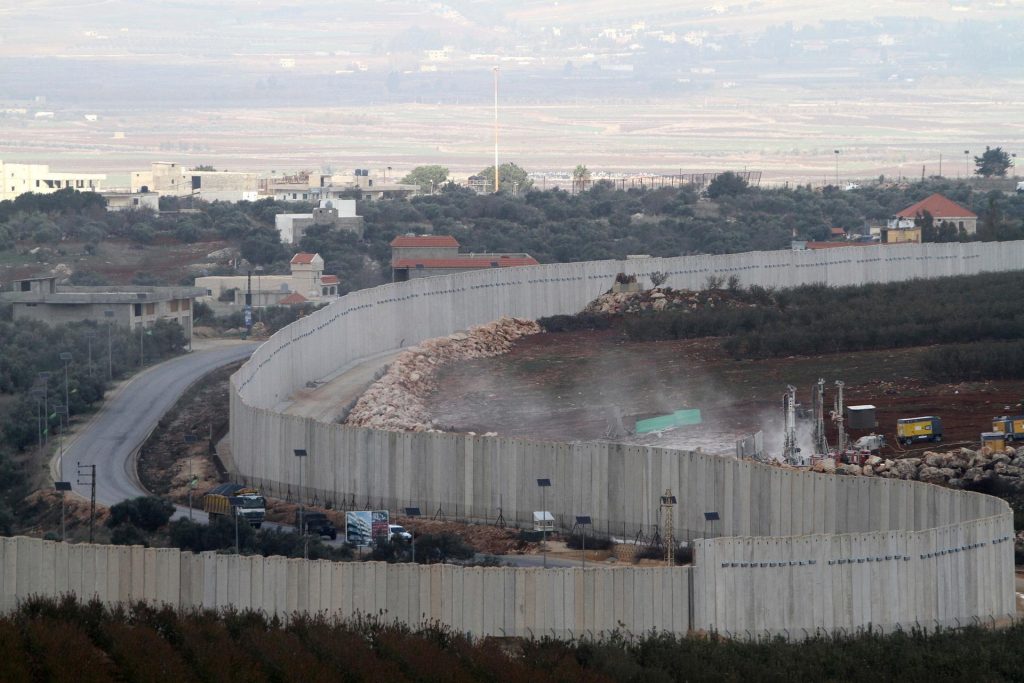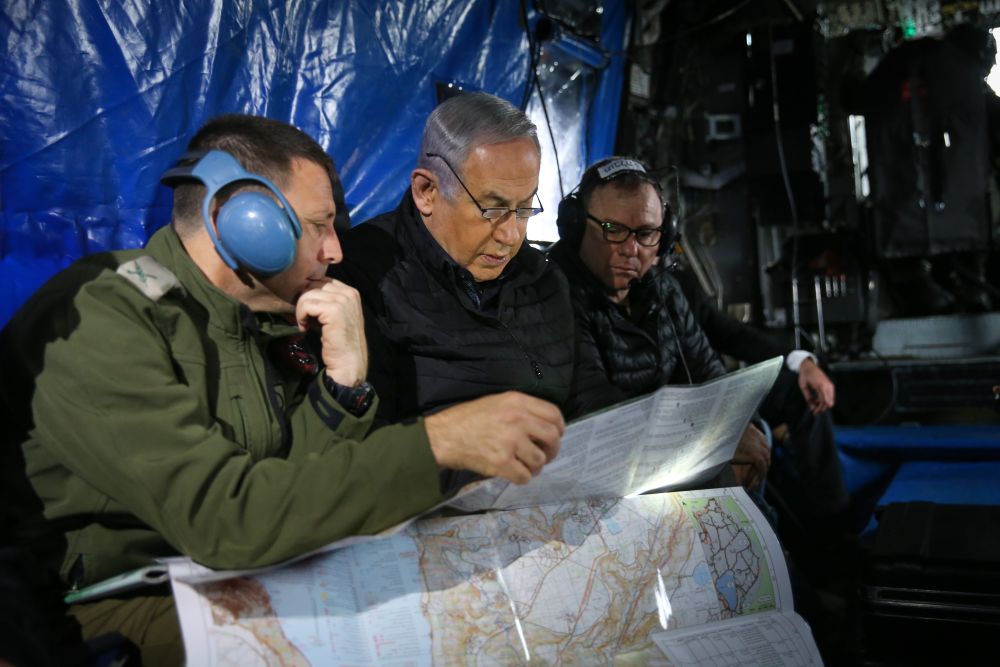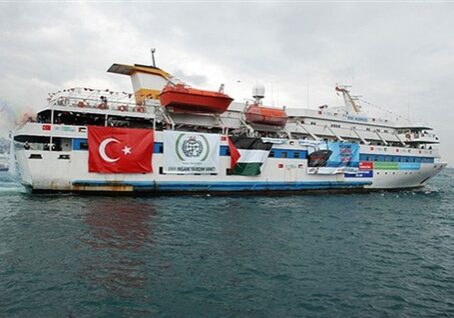Australia/Israel Review
Northern Exposure
Dec 19, 2018 | Amotz Asa-El

“This tunnel will not achieve its goal,” said Prime Minister Binyamin Netanyahu in a Dec. 4 press conference – referring to the protracted, organised, and well-funded engineering effort by Hezbollah to challenge the IDF in a way that the Iranian-backed militia had previously avoided.
Speaking with IDF Chief of Staff Lt-Gen Gadi Eisenkot beside him, Netanyahu was following up on the IDF’s communique earlier that day announcing Israel’s discovery of tunnels constructed from Lebanon under the border into Upper Galilee.
Announcing “Operation Northern Shield”, an extended operation to address the tunnels, the IDF said it had discovered an unspecified number of such tunnels and would be systematically demolishing them. The operation was expected to last “weeks”, Gen. Eisenkot told reporters.
As of this writing, the full scope or locations of all the tunnels has not yet been confirmed, but the IDF says that at least three have been found.
On Dec. 5, the IDF released footage of the first tunnel it discovered – just outside Metulla, the quaint town of 1,600 people at Israel’s northernmost tip.
The video shows an apparent Hezbollah engineer approaching the tunnel’s innermost end when he encounters an Israeli-installed camera. There is a small explosion from the Israeli device and he dashes back out. The 25-metre deep, 200-metre long tunnel starting in the Lebanese village of Kafr Kila extended 40 metres inside Israeli territory. Israel’s military intelligence reportedly had been monitoring suspicious activity in a newly installed brick factory just across the border for two years. That factory reportedly housed the entrance to the tunnel.
A second tunnel was later detected emerging from the Lebanese village of Ramiye, two kilometres northeast of Zarit, an Israeli village of 270 residents 20 km southwest of Metulla.

Israel Prime Minister Benjamin Netanyahu sits in a helicopter as he makes his way to visit the northern part of Israel, December 6, 2018
“Hezbollah intended to insert through these tunnels terrorists into our territory as part of a broad attack that aimed at conquering parts of the Galilee,” said Netanyahu. Two days later Netanyahu said that judging by the tunnel’s width, Hezbollah intended to use it to lead “several battalions” into Israel and launch “a campaign of murders and kidnappings.”
The tunnel-project coincides with Hezbollah leader Hassan Nasrallah’s public warnings in recent years that his organisation is ready to conquer the Galilee. According to the Lebanese daily Al Joumohuria, Hezbollah held a large-scale manoeuvre in which it practised an invasion of northern Israel as far back as 2012.
Israeli analysts believe that the specific tunnel outside Metulla was part of a plan to have troops emerge in the town by surprise and cut it off from Israel. Even if they succeeded only briefly, it was hoped this feat would become a major media event that would shock Israel, inspire its enemies, and impress the world. Now, while still bearing military, strategic, and political implications, the project’s discovery renders it obsolete.
Hezbollah’s plan was reportedly thwarted thanks to newly developed Israeli technology that uses seismic sensors that can detect engineering activity underground from a distance.
The technology was developed in order to address Hamas’ digging of tunnels from the Gaza Strip into Israel earlier this decade.
Hamas’ task was easier, since Gaza is coastal, which makes its terrain flat and soft, and therefore suitable for smooth and quick digging. The Galilee, by contrast, is mountainous and rocky. Hezbollah was therefore compelled to dig relatively short distance tunnels, starting as close as possible to the Israeli border, and likely made more noise in the digging process.
Then again, Hezbollah reportedly gained experience helping Yemen’s Iranian-supported Shi’ite Houthi rebels dig tunnels into Saudi Arabia.
The IDF, for its part, monitors closely almost every structure along the Lebanese border. That is how it detected the tunnel in Kafr Kila – its reconnaissance unveiled an underground headquarters surrounded by multiple outposts, both above and underground, alongside ammunition bunkers.
The IDF believes that the underground infiltration was intended to be shielded by rocket and mortar salvos from the Lebanese village aimed at the houses and streets of Metulla.
Israeli technology has deprived Hezbollah of the most important prerequisite for its scheme, the element of surprise. Now Hezbollah is on the receiving end of a diplomatic attack. Further, Lebanon, ostensibly committed under UN Security Council Resolution 1701 of 2006 to “full cessation of hostilities” toward Israel, is also now in the hot seat for having allowed or turned a blind eye to the Hezbollah tunnel project.
Netanyahu thus asked Maj-Gen Stefano Del Col, the commander of UNIFIL, the UN peacekeeping force in south Lebanon, to join Maj-Gen Yoel Strick, Commander of the IDF’s Northern Command, for a tour of the newly discovered tunnel at Kafr Kila. Strick also shared aerial photos of the tunnel works at Ramiye with Del Col.
Strick told his guest that Israel expected the UN’s peacekeepers to demolish the tunnel’s Lebanese end, and to pass on the message that Israel held the Lebanese Government responsible for the digging. Anyone entering the tunnel without coordination with Israel, said Strick, will be putting his life at risk.
Militarily, Hezbollah will now have to reconsider its plans. However, its main menace to Israel, more than 130,000 rockets and missiles, remains intact, and potent.
Strategically, Israel evidently sees Hezbollah and its Iranian sponsors as the main threat to its security. That explains why the Netanyahu Government’s security cabinet made a decision not to allow November’s brief skirmishing in Gaza to escalate into a broader conflict.
From Hezbollah’s viewpoint, the dilemma appears to be when to attack Israel, with which it has actually not clashed for more than 12 years.
Having fought in Syria’s civil war on behalf of President Bashar Assad, Hezbollah is seriously bruised. The organisation at its peak boasted an estimated 50,000 soldiers, including reservists, but is believed to have lost about 4,000 men in Syria, at least half of them killed.
Moreover, funding for the Shi’ite organisation is a subject of debate within an economically-struggling Iran. Though still flowing steadily, the size and longevity of its Iranian financing cannot be taken for granted.
Added up, these circumstances weigh on the readiness of Hezbollah and the Lebanese Shi’ite community, both psychologically and logistically, for renewed fighting with Israel.
Yet Israel might nonetheless feel compelled to act preemptively, considering Nasrallah’s rhetoric and deeds.
In the event of a major conflict, Hezbollah’s strategy of placing its missiles, rockets, and troops amongst and within civilian houses, and its expected high-intensity barrages of rockets on Israeli cities and towns, would likely result in large civilian casualties on both sides of Israel’s northern border.
That is why the initial aftermath of the tunnels’ discovery has actually been treated with considerable caution by both sides.
Israel strictly avoided crossing the border, preferring instead to have the IDF’s Engineering Corps work only on Israel’s side, while alerting the UN and the Lebanese Government at the same time.
Israel’s preference is, for now, to shape the situation mainly through diplomatic rather than military means. This was reflected in a meeting Netanyahu held in Brussels with US Secretary of State Mike Pompeo the day before the announcement of the new tunnel threat. Israeli pundits concluded that Netanyahu’s arrival in the meeting unaccompanied by an IDF general was a way of sending a message that Israel does not intend at this stage to launch strikes in Lebanon.
The Israeli quest to focus on diplomacy, which saw Netanyahu tour the exposed tunnel with 20 foreign ambassadors, coincided with Lebanese Prime Minister Saad Hariri’s statement that “the developments in Lebanon’s southern border should constitute no reason for escalation.”
Hezbollah’s response – unlike the Lebanese Army’s claim that Israel was talking about “imaginary tunnels” – was merely that it is “following the situation,” that it “will not respond to the IDF’s claims,” and that it is “ready to respond to any aggression.”
Evidently surprised and embarrassed, Hezbollah asked the villagers of south Lebanon to continue with their daily business – apparently a euphemism for “we are not about to do anything rash.”
Washington’s full support for Israel’s “effort to defend its sovereignty,” as National Security Adviser John Bolton put it, surprised no one.
Less obvious, and more meaningful, was Russia’s backing, given Moscow’s key role in Syria, which in turn is intertwined with Iran’s activity in Lebanon. “Israel clearly has the right to defend its national security,” said Foreign Minister Sergei Lavrov, “including illegal entry into its territory.”






